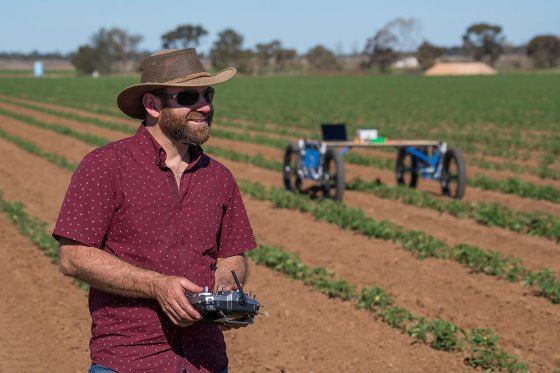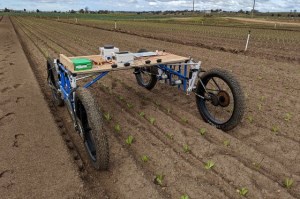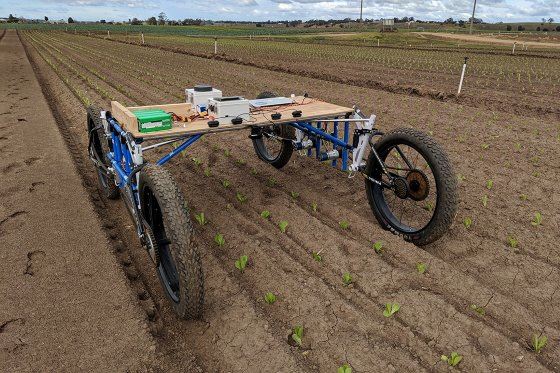Australian start-up thingc Robotics is expecting to deliver its first commercial agricultural robot in 18 months, offering farmers a fully electric robotic platform on which they can use the tools of their choice.
The Melbourne based start-up is preparing to start field trials with 3-5 units in the next six months.
The flexibility of the robot platform will enable farmers to adapt the machine to fit their needs.
“You can add all sorts of technology like mowing, spraying, or mechanical weeding.
Everything is designed in such a way that we can plug and play components,” says thingc Founder Cameron Leeson.
Farmers will be able to change the components themselves. “A farmer does not want to wait for a technician to come and solve a problem. Is there is a failure in a component, you just pull it out and plug a new one in,” says Mr Leeson.
The robot also comes complete with an on-board optical system for navigation and applications such as precision spraying. “We are also using other sensors, so it is a combination of both”, explains Mr Leeson.
thingc’s mission is to build a workforce on demand for farmers. “People no longer have to sit on tractors all day. Autonomous vehicles can carry out all sorts of tasks. And once you teach a robot to do something well, you don’t have to do that with other robots. You just replicate it. And a robot is very reliable. It never gets sick and keeps on going,” says Mr Leeson.
The future is lightweight and electric
thingc believes the drivetrain of the future is electric and plans to build a fully electric lightweight robot platform to give farmers the ability to be self-sufficient with their energy needs. “We are aiming for batteries that will keep the robot going for 4 to 6 hours,” says Mr Leeson.
“Farmers can then do a battery swap. With 2 battery swaps, you have an 18-hour operation. And while you are running the robot you obviously have time to recharge the batteries without using a rapid charging system. That will make the batteries last a lot longer. In the long run we are thinking of docking stations.”
Not only will the robots be lightweight, they will also be smaller. “And we are looking at building lighter smaller sized robots,” adds Mr Leeson. “They are much smaller than for example the ones SwarmFarm builds. Our robots are probably half the size.”
This will allow farmers to have multiple machines running, managed by one person. “I expect that will be the case on the majority of farms in the future”, says Mr Leeson. “They come at such a low cost, compared to the heavy farm equipment that you see now most of the time.”
The machine itself will be updatable. All components will be manufactured locally as well as in China. The assembly will take place in thingc’s warehouse in Brunswick, Australia. “We have the supply lines ready, so it will be relatively straightforward to build a new robot”, says Mr Leeson.
Funding the venture
thingc is currently raising funds and looking for investors to fund the venture. It is aiming for a total investment sum of 1 million Australian dollars and hopes to have the funding needed within 6 months.
thingc also expects to have the first robots in the trials running by that time. It is offering participation in field trials for early customers. “We are looking at a limited program”, says Mr Leeson. “So, we will start with a small number of customers for our first production run.”
The company is looking for farmers that wish to be a part of the development as well as use the robot. “We will focus our development on the applications our early customers want on a robot,” explains Mr Leeson.
“They will get a good deal and they will get very dedicated support to solve any problem they are facing. We have not signed up any farmers yet but we are having discussions with some.”
thingc brought its prototype over to the Techspo conference in the Australian town of Wagin earlier this year. “We had a lot of interest there from farmers”, explains Cameron. “And from there I took the robot on a road trip to several places in NSW and Victoria. We have received a lot of positive feedback from farmers about our concept.”
The goal of the road trip was partly to understand what applications farmers are looking for.
“After that we started talks with tool manufacturers. How they can build a tool for our robot that they would usually put on a tractor.
“The top three applications we are interested in, are mower decks, precision spraying systems and mechanical weeding tools,” says Mr Leeson.
The company has not confirmed a price on the robot yet. That will largely depend on the tool that is used on the platform.


